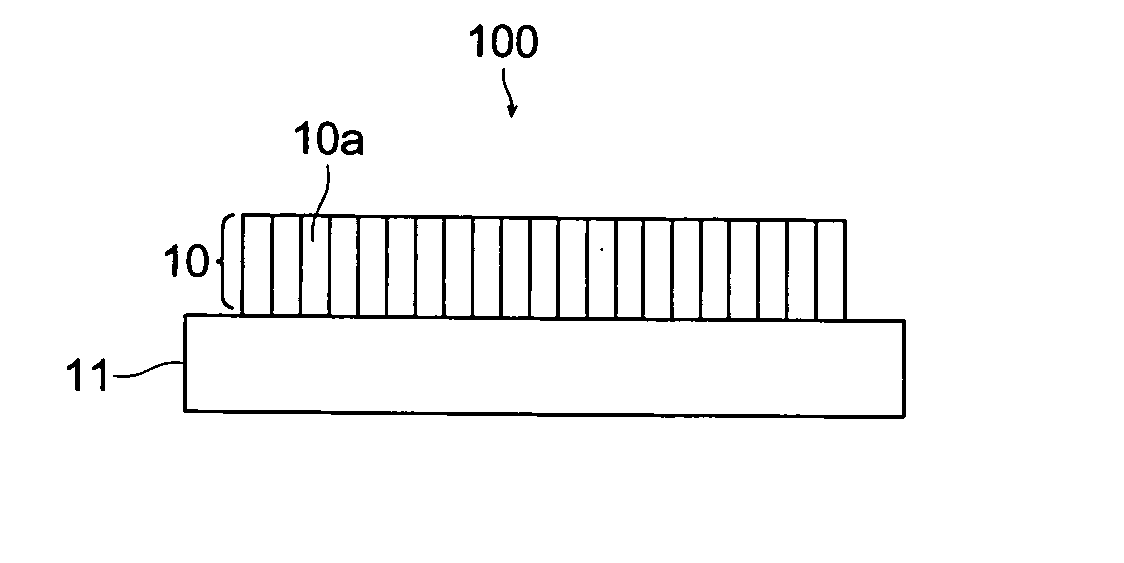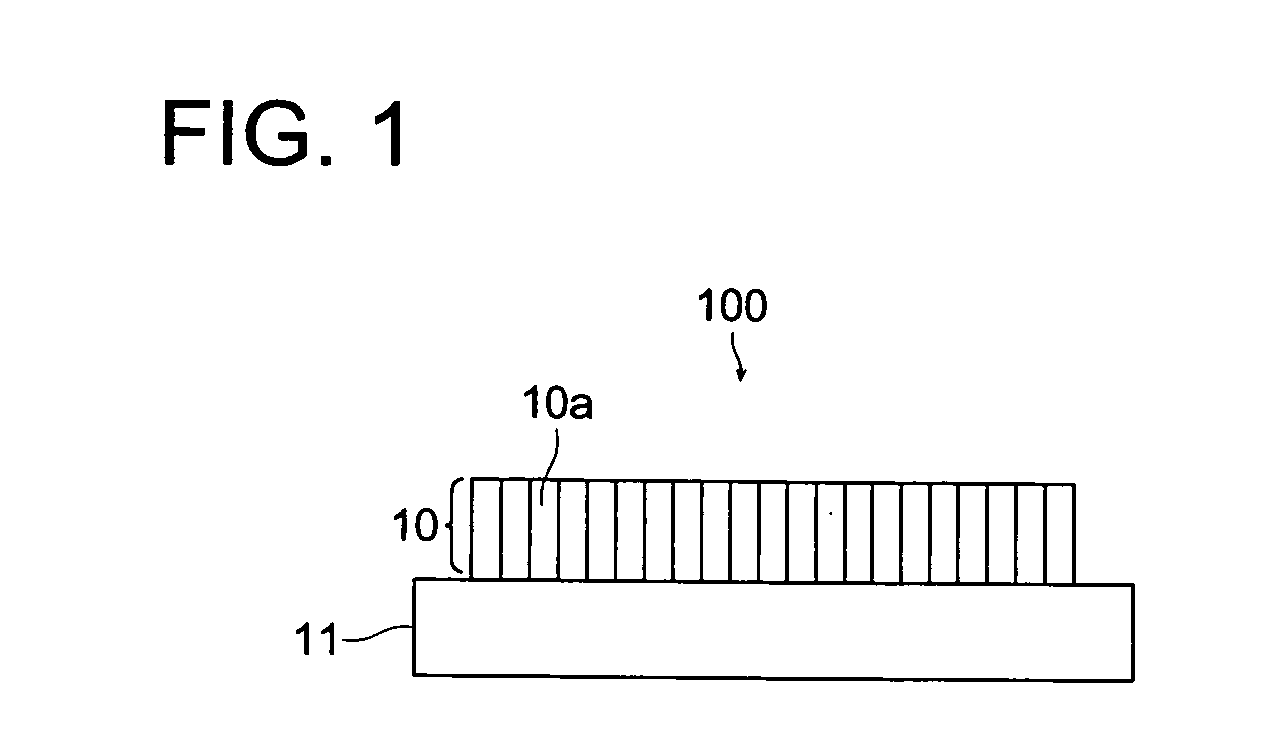Radiation image conversion panel and preparation method thereof
a technology of conversion panel and radiation image, which is applied in the direction of conversion screen, instruments, nuclear engineering, etc., can solve the problems of unstudied insufficient characteristics of luminance and sharpness relationship, and inability to achieve uniform distribution of crystal diameter, etc., to achieve deterioration of optical characteristics, high thermal expansion coefficient, and low shock resistance
- Summary
- Abstract
- Description
- Claims
- Application Information
AI Technical Summary
Benefits of technology
Problems solved by technology
Method used
Image
Examples
example 1
Using the vacuum deposition apparatus (1), raw material of the foregoing phosphor to be deposited was charged into a resistance heating crucible, and the support (11) was set to a rotatable support holder (4) and the distance between the support (11) and an evaporation source (3) was adjusted to 200 mm. Subsequently, the inside of the vacuum deposition apparatus (1) was evacuated and then, argon (Ar) gas was introduced thereto to adjust the degree of vacuum to 0.1 Ps; thereafter, the support (11) was maintained at a temperature of 100° C., while rotating the support (11) at a rate of 10 rpm. Subsequently, the resistance heating crucible was heated to deposit the stimulable phosphor and deposition was completed when the thickness of the stimulable phosphor layer reached 500 μm. Then, the thus formed stimulable phosphor layer was put into a protective layer package in dry air and sealed to obtain a radiation image conversion panel having a sealed stimulable phosphor layer.
example 2
Similarly to Example 1, deposition of a stimulable phosphor layer was carried out to obtain a radiation image conversion panel, except that the distance between the support (11) and the evaporation source (3) was adjusted to 300 mm.
example 3
Similarly to Example 1, deposition of a stimulable phosphor layer was carried out to obtain a radiation image conversion panel, except that the distance between the support (11) and the evaporation source (3) was adjusted to 400 mm.
PUM
 Login to View More
Login to View More Abstract
Description
Claims
Application Information
 Login to View More
Login to View More - R&D
- Intellectual Property
- Life Sciences
- Materials
- Tech Scout
- Unparalleled Data Quality
- Higher Quality Content
- 60% Fewer Hallucinations
Browse by: Latest US Patents, China's latest patents, Technical Efficacy Thesaurus, Application Domain, Technology Topic, Popular Technical Reports.
© 2025 PatSnap. All rights reserved.Legal|Privacy policy|Modern Slavery Act Transparency Statement|Sitemap|About US| Contact US: help@patsnap.com



